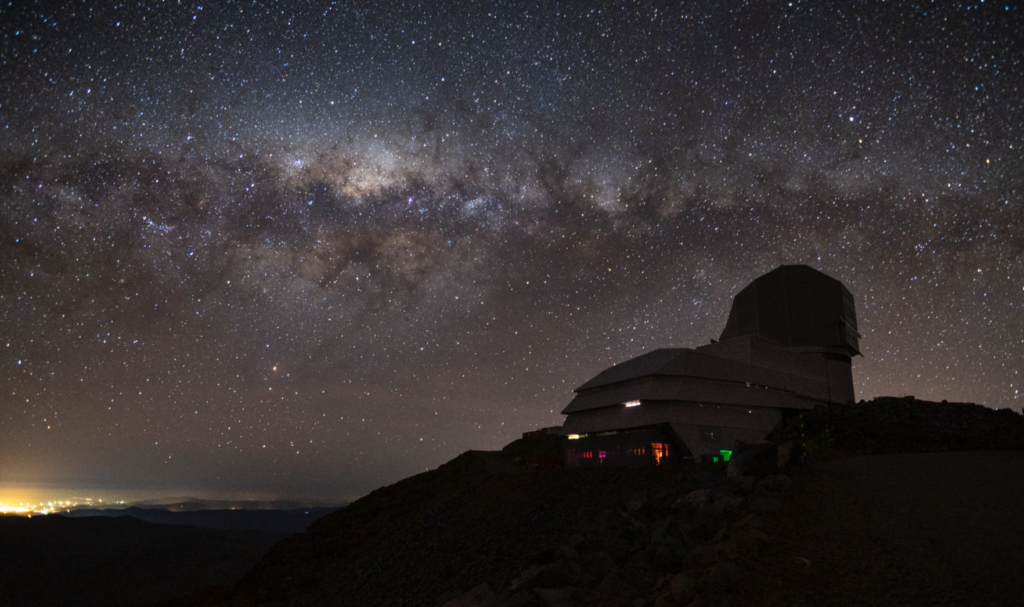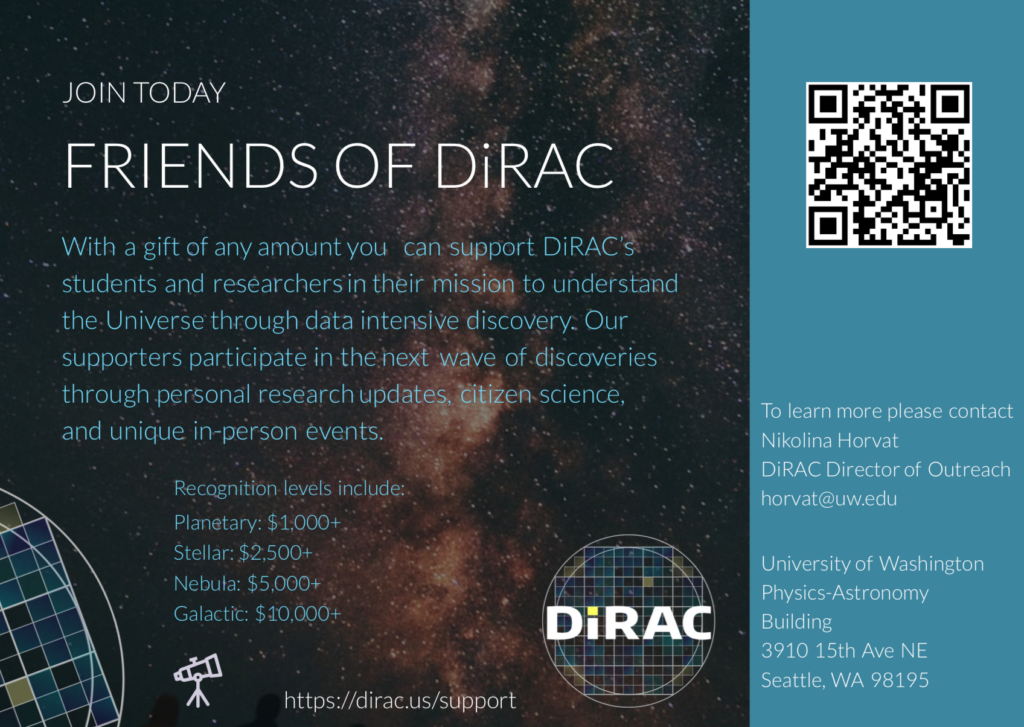On March 1st, 2023 DiRAC hosted the first of a series of events “A New Era of Discovery: Mapping the Universe with the Rubin Observatory” at the UW Planetarium.
The interest in the event exceeded all the expectations. The evening was planned around two planetarium shows and many opportunities to hear the latest updates from scientists, postdoctoral fellows, engineers, and students – all contributing in building the largest sky survey in human history.
UW astronomers informed and engaged guests in various topics from the Rubin Alert Distribution System, Asteroid Dynamics & Impacts to the Big Data & Citizen Science.

In the second part of the evening, DiRAC Director, Prof. Mario Juric, acknowledged one of the major donors and a partner, B612 Foundation. He presented Danica Remy, B612 President, with a small token of gratitude after which a former astronaut and the Asteroid Institute Executive Director, Ed Lu, joined the conversation virtually on Zoom.
DiRAC team is energized by the support of its community and plans to continue the momentum of excitement and curiosity especially as we are nearing the Rubin Observatory’s first light in 2024. We will share the knowledge as we learn it and present opportunities to further engagements and events. If you would like to stay in touch and learn about the next event, please email us at dirac@uw.edu

“A New Era of Discovery: Mapping the Universe with the Rubin Observatory”
We’re at the brink of a new age of survey-driven discovery in astronomy. Where before we could only study a handful of objects at a time, new detectors, algorithms, and telescopes will soon allow us – and the entire world – to monitor billions.
The flagship of this era will be the Rubin Observatory, set to open in Chile in late 2024. Rubin will continuously gather data for over 20Bn stars, 20Bn galaxies, with billions of asteroid observations. In importance, it is a ground-based peer of the Webb space telescope.
In about a year, DiRAC researchers, students, and citizen scientists will use Rubin to scan the Solar System for hazardous asteroids, discover interstellar comets, and search for new planets in our Solar System. Our codes will map the Milky Way, detect the most energetic explosions in the universe, and help understand Dark Energy. Our students will learn about astronomy by participating in once-in-a-generation wave of discovery.
We’re looking forward to sharing this with the community of enthusiasts, friends, and supporters who make DiRAC possible.
For more upcoming events check out our website’s news and events page.